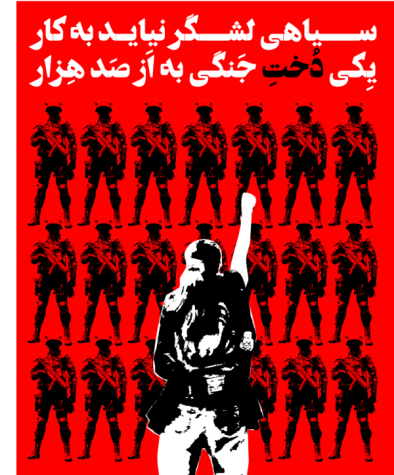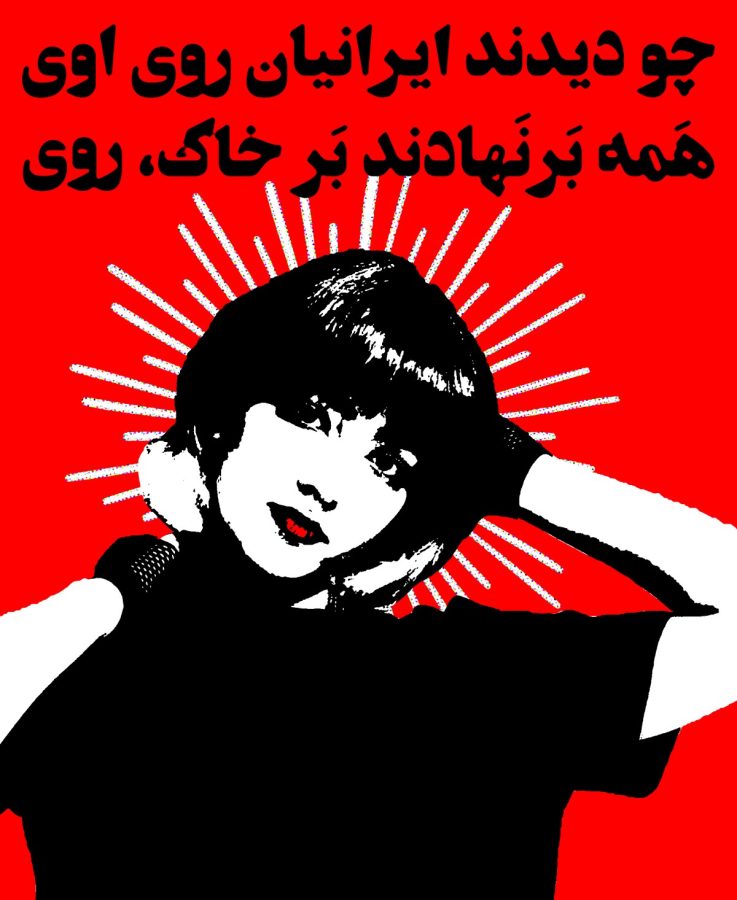The art of protest in Iran
The expression of revolution and the display of the oppressed
November 22, 2022
Protests aren’t always done through the usual means of marches and cheers, according to Professor of History of Art and Architecture at the University of Massachusetts, Dr. Pamela Karmi. Art has been used as a form of protest in Iran since before the ‘80s.
According to Karmi, protest art used to be more underground and subtle, often taking place in remote areas where the morality police aren’t likely to intrude but now with recent events that have happened in Iran, Karmi describes recent protest pieces as “in your face.”
The Museum of Culture and Environment hosted a webinar on Nov. 19 where they invited experts in the Iranian region to speak about the country’s civil unrest. Both of the protests that have sparked up since Mahsa Jina Amini’s death in custody and the displays of struggle that were happening before the Morality Police’s arrest of Amini.
“[Protest] art is so important because in the last 43 years, Iranians have not had the opportunity to form opponent political parties to the central government,” Karmi said. “Since we haven’t had these opponent political groups, people have had to express their grievances, their opinions that are often against the central regime, in different forms, in the form of literature, in the form of art and in the form of theatrical performances.”

Karmi said one of the reasons that protest art has been so prevalent in Iran recently is because of the power of social media.
“It’s particularly powerful because of social media,” Karmi said. “People don’t have time [to] read hundreds of texts written by journalists on social media; but they do have time to glance over an image, and a powerful image is worth 1,000 words.”
An example of Iranian protest art going viral was the song “Baraye” by Shervin Hajipour. According to Karmi, “Baraye” became the unofficial protest song of Iran, Hajipour was arrested just days after posting the song.
“Sheravin posted “Baraye,” which means ‘for the sake of’ or ‘because,’ recorded in his room and posted on Instagram for his followers and was shared more than 40 million times on social media platforms in just two days,” Karmi said.
According to Karmi, another protest display that spread rapidly over social media was the “Red Fountain in Tehran.” An anonymous artist dyed the water in multiple historic fountains red including the fountains in Daneshjoo Park, near the city theater, and in front of the Artists’ Forum.
“An anonymous artist made Tehran in Blood, dying fountains in important cultural centers red,” Karmi said.
Karmi said the one piece of artwork that had to make her look twice in case she wasn’t seeing things right was the tampon flowers on security cameras.
“A bunch of anonymous women went into the Tehran metro stations and they covered the surveillance cameras with [Feminine Hygiene Products],” Karmi said. “The way that they have placed these tampons over the security cameras makes them look like little flowers in the ceiling.”
Karmi said she couldn’t tell that it was connected to Iranian protest art at first when she saw it on social media. She said that this is an example of how protest art can sometimes be mistaken for general art pieces.
“The first time I saw the picture I said, ‘Okay who’s doing these flowers on the ceiling? It’s kind of boring, I’m sorry,’” Karmi said. “Then I noticed that they were [feminine hygiene products] and they are actually real works of resistance against surveillance and against the morality police.”


